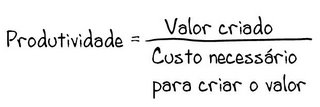Peter Drucker escreveu:
"Good executives focus on opportunities rather than problems.
Problems have to be taken care of, of course; they must not be swept under the rug. But problem-solving, however necessary, does not produce results. It prevents damage. Exploiting opportunities produces results."
O artigo, "China suffers its own 'China shock'," examina as transformações profundas na indústria de manufactura chinesa, especialmente nos sectores de baixo custo como o calçado e o vestuário, que durante décadas foram os motores do crescimento económico do país. O aumento dos salários, a concorrência de países do Sudeste Asiático, o envelhecimento da força laboral, e a crescente automatização estão a tornar mais difícil a sobrevivência deste modelo industrial. A China continua a liderar a produção mundial em muitas áreas, mas o seu peso tem vindo a diminuir. O governo aposta agora na automação e em sectores tecnológicos avançados.
"Wages in the manufacturing hubs of southern China, which were once the backbone of the country's explosive economic growth, have risen steadily, while the competition from rivals in south-east Asia has become fierce.
China still dominates shoe production, but its share of global exports has slipped by 10 percentage points over the past decade.
...
Factories across China at the low-end of manufacturing are facing the same dilemma - either they invest in automation that shrinks the number of jobs, or they slowly wither away.
The result, in the view of researchers and economists, is a painful shift [Moi ici: Aquilo a que chamo a transição dolorosa] away from low-cost, labour-intensive production, that could leave millions of older, lower-skilled workers in the lurch.
...
Manufacturing is far from dead in China, however. In a factory in Panyu on the outskirts of Guangzhou, humans work in synchronisation with machines to churn out new electric vehicles every 53 seconds.
...
China's working-age population peaked at more than 900mn in 2011, but is forecast to shrink by almost a quarter to about 700mn by the middle of this century, according to a Brookings Institution report.
Policymakers, therefore, see automation and robotics as an imperative if the country is to hold on to its long-term productive capacity. If China doesn't automate now, goes the thinking, even its higher-end production will be outcompeted by rival nations.
...
"The demand for automation and robotics will become more and more urgent as a result.""
Entretanto, mão amiga fez-me chegar este artigo, "These are China's economic priorities for 2025":
- Trend 1: Even stronger focus on future technologies
- Trend 2: Domestic consumption is being promoted more strongly [Recordo esta série de especulações. Em especial a primeira de Agosto de 2008]
Por cá, pedem-se paletes de escravos imigrantes para contrariar o aumento do custo da mão de obra.
Trechos iniciais retirados de "China suffers its own 'China shock'" [O título é uma brincadeira com o que todos nós usámos muitas vezes acerca do choque chinês] publicado no FT do passado dia 26 de Março.

%2013.52.jpeg)
%2006.21.jpeg)













Sem comentários:
Enviar um comentário